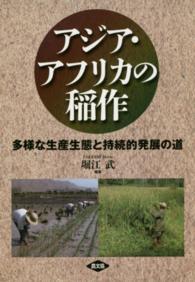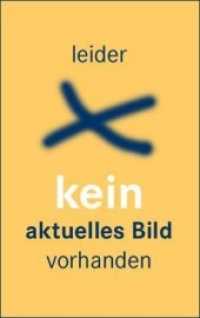- ホーム
- > 洋書
- > 英文書
- > Science / Mathematics
Full Description
This book provides a systematic understanding of urban river management from the perspective of ecosystem health in the Pearl River Delta region of China, where rapid socio-economic development happens together with exploitation and pollution of the natural environment. Urban rivers, which used to support navigation and provide water resources to humans, now suffer from various kinds of ecosystem degradation and thus create threats to regional sustainability. This book treats the urban river as an ecosystem which closely relates to and interacts with humans and defines urban river ecosystem health as a requirement at three levels: sensorial fitness, living water, and affinity with humans, which emphasizes more on the human-oriented needs. The evolution processes of urban river ecosystem health protection can generally be divided into four phases, demonstrating the relationships between human activities and UREH status as simple balance, uncontrolled imbalance, continuous interlocking, and stable harmony. The relationships between typical urban rivers and humans in the Pearl River Delta region, China, are then analyzed on both regional and local scales and from lateral, time-longitudinal, and spatial dimensions. Intensive human activities, together with the intrinsic complex and high-density river network, result in deteriorating water quality, changing hydrological conditions, and damaging the river ecosystem in this region. From the perspective of political ecology, various actors in urban river management include governmental agencies, business, multilateral institutions, ENGOs, and grassroots actors, whose unequal power relations vary over time and space, causing conflicts as well as coordination. Especially, different governmental agencies are engaged, resulting into overlap and gap among their functions as well as spatial discrepancy. River Chief System, as a new practice of urban river management, has strengthened the collaboration effect and got success in river pollution control. The spatial scale effect of human activities on urban river water quality is examined, implying the necessity of adopting a unified management strategy at the buffer zone scale to protect and restore urban river ecosystem health. The target audience of this book includes postgraduate students and researchers who have research interests in, as well as government officers, whose routine is related to water management.
Contents
Introduction.- Defining Urban River Ecosystem Health.- Urban River Changes in the PRD Region within DPSIR Framework.- Political Ecology Analysis of Urban River Management System.- Impacts of Impervious Cover on River Water Quality: Case Study of Shiqi River Watershed.








